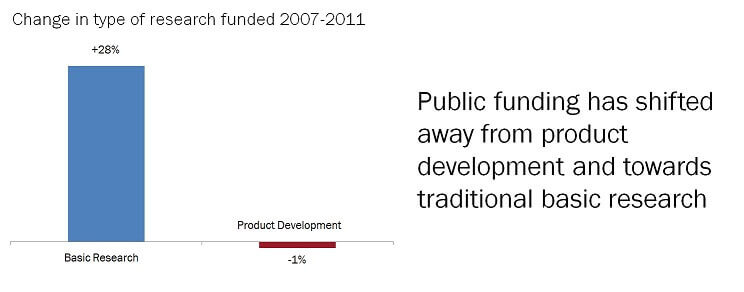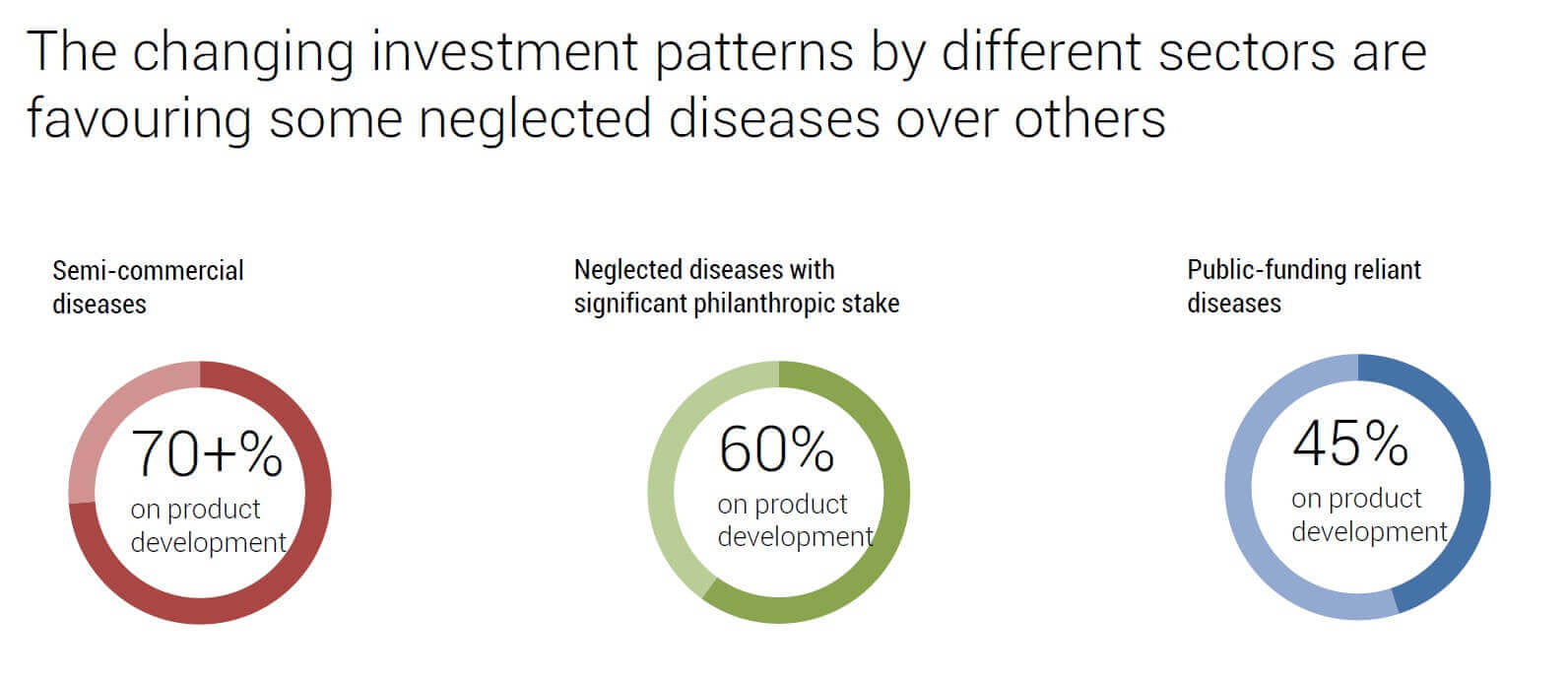In this guest post, Dr. Nick Chapman, policy analyst at Policy Cures, writes about the recently released G-FINDER survey on neglected disease research and development (R&D).
Sometimes the best news is no news at all. That’s one of the thoughts that struck me while pondering the results of the latest G-FINDER survey on global funding of R&D for neglected diseases. This year marks the G-FINDER report’s fifth birthday, and so provides a good opportunity to step
back and consider what’s really going on with the global funding picture.
Impact of the global recession not as bad as feared
Which brings us to the ‘no news is good news’ point: despite our previous concerns, the global financial crisis has so far not had a dramatic impact on
overall neglected disease R&D funding. Public funding has remained essentially stable in the face of stiff budgetary pressures affecting most governments
around the world, and philanthropic sector cuts (down by over a quarter since 2008) were largely offset by increased investment by industry.
Overall, just over three billion dollars was invested into R&D for new neglected disease products in 2011—an increase of nearly half a billion
dollars since 2007. Importantly, funding remained steady compared to 2010, arresting the decline we saw the year before and hopefully setting the scene
for a return to positive funding growth in the years ahead.
US public funding only minimally lower in 2011
The US maintained its position as the pre-eminent funder of neglected disease R&D, accounting for around 70 percent of all public funding. Its 2011
contribution of $1.4 billion was ten times larger than the next largest public funder (the UK, with $133 million). However, US public funding dropped
by $31 million (or 2.2 percent) in 2011. Although only a moderate drop, this marks the second consecutive year of funding cuts, and means that US public
funding of neglected disease R&D is now more than $100 million below its 2009 peak.
The vast bulk of US public funding (nearly 90 percent) is delivered via the National Institutes of Health (NIH), so it is no surprise that the $28 million
cut in NIH investment accounted for the bulk of the nation’s funding decrease (although there were also smaller funding cuts from the US Agency for
International Development and the Centers for Disease Control and Prevention). For this reason, the implications of the current budgetary negotiations
(and threat of sequester) on NIH funding will be important to follow closely.
So the resilience in overall neglected disease R&D funding despite the global recession is the good news. But, like the Phantom of the Opera’s mask,
this rather bland façade hides some troubling features underneath. And this is where some of the not so good news comes in.
Industry is concentrating its funding
One of the unfortunate trends is, somewhat surprisingly, linked to the consistent growth in pharmaceutical industry investment over the last half-decade.
Since 2008, investment in neglected disease R&D by multinational pharmaceutical companies increased by nearly $200 million, reaching $525 million
in 2011.
It’s a positive trend that big pharmaceutical companies continue to fund across a range of neglected diseases. However, we did find that their biggest
investments are increasingly into late-stage product development for a limited number of diseases with some commercial overlap, such as dengue fever,
bacterial pneumonia and meningitis, and tuberculosis (TB). These diseases, while in great need of R&D support from industry and others funders,
now account for two-thirds (65 percent) of all industry funding, up from half (50 percent) in 2008, with dengue vaccines and TB drugs accounting for
virtually all the increase in industry R&D investment.
This change has resulted in a moderate shift in the overall global funding picture towards these ‘semi-commercial’ diseases, which increased their share
of global neglected disease R&D funding from 22.4 percent of total funding in 2008 to 28 percent in 2011.
Public funding has shifted away from product development
What we’ve also seen – and this is particularly concerning – is that the public sector is increasingly investing in academic basic research at the expense
of product development. Over the five years of the G-FINDER survey, public investment in basic research has increased by 28 percent ($124 million),
while public product development investment has actually slightly declined (down 1 percent). As a result, basic research is now nearly one-third of
public funding (31.2 percent in 2011), up from one-quarter (26 percent) in 2007. This is a major shift on a public funding base of around $2 billion
per year.
This is important, because governments are still the mainstay of neglected disease R&D funding; they were by far the largest source of funding before
the global financial crisis, and remain so after, despite growth in industry funding. And, as we’ve seen, the sectors that traditionally fund product
development—industry and philanthropy—have either cut or re-focused their funding over the past five years.

The potential problem with these changing investment patterns is that what may appear to be a relatively modest overall change can have a significant effect
on the type of research that is funded for a given disease.
For example, on average over 70 percent of total funding for semi-commercial diseases is invested into product development, compared to 60 percent for
diseases with a significant philanthropic stake, and 45 percent for diseases that rely heavily on the public sector.

A high reliance on public sector funding is less of an issue for high-funded diseases such as HIV, but if a disease has both low funding and a low focus
on product development, outcomes are likely to be poor, as we’re seeing for the most neglected diseases.
Funding patterns a threat to PDPs
What does all this mean for product development partnerships (PDPs)? If the public sector shifts away from funding product development and the cuts in
philanthropic funding were to continue, then PDPs are one group who should be particularly concerned.
Funding for PDPs is down $129 million since 2008, and—although they appear to be diversifying their funding sources (including towards science and
technology agencies)—PDPs still rely on the Bill & Melinda Gates Foundation and government aid agencies for over three-quarters of their
funding. However, both these groups have cut their PDP funding substantially since the financial crisis. The Bill & Melinda Gates Foundation reports
that its funding drop is cyclical, but PDPs will want to monitor this trend closely.
The 5th annual G-FINDER report was launched in London on the 3rd of December 2012 by the report’s lead author, Dr. Mary Moran, director of Policy Cures, and an international panel. Conducted by Policy Cures and funded by the Bill & Melinda Gates Foundation, G-FINDER reports on global funding of R&D for new products for neglected diseases.


